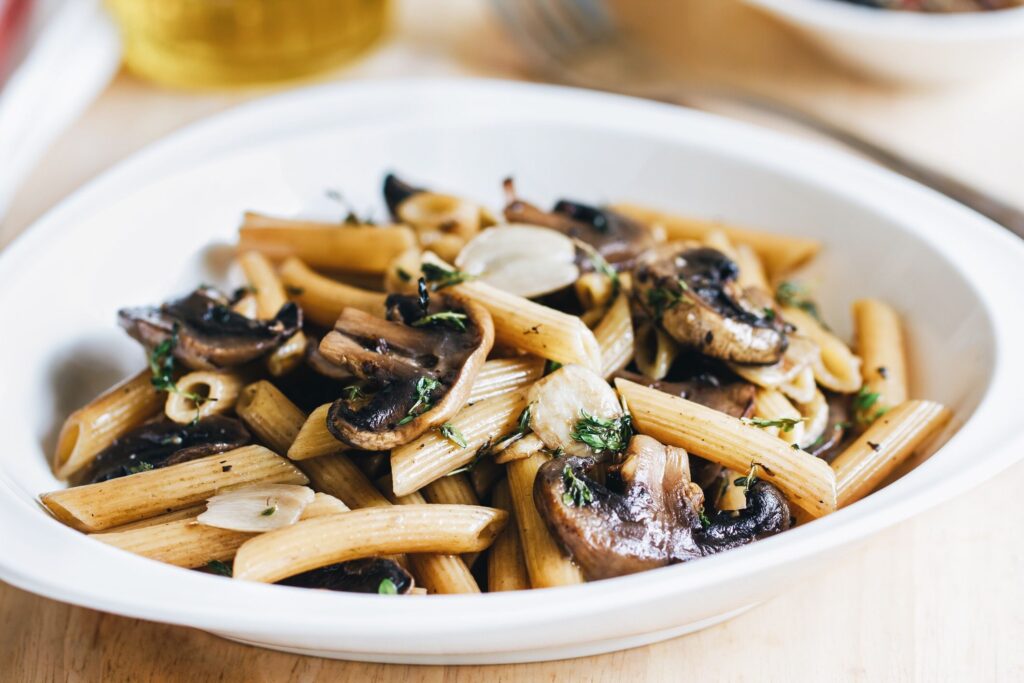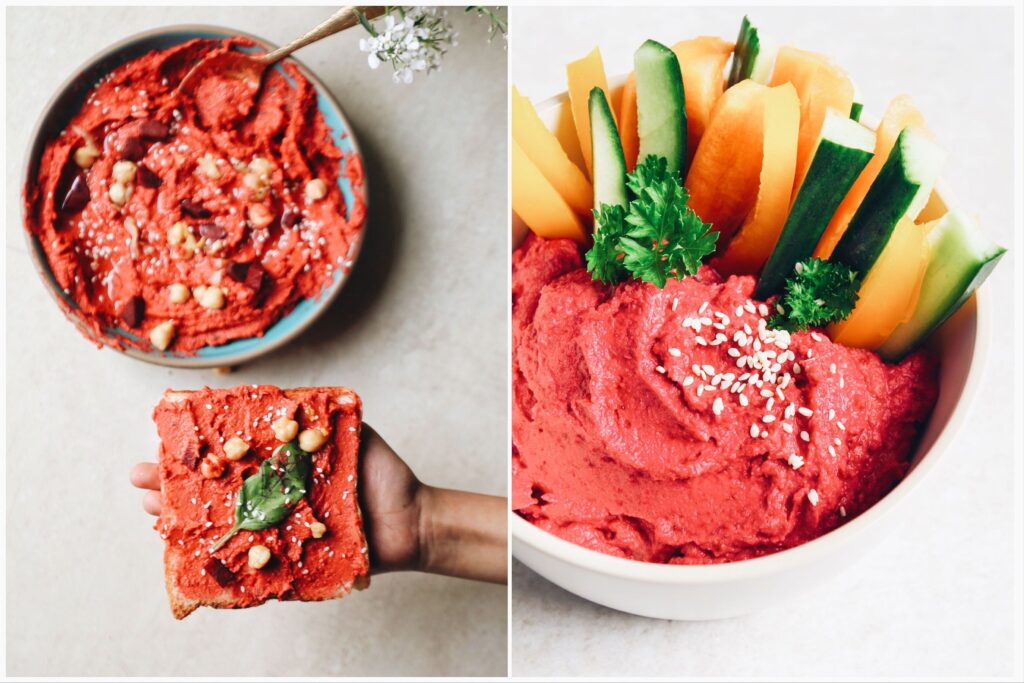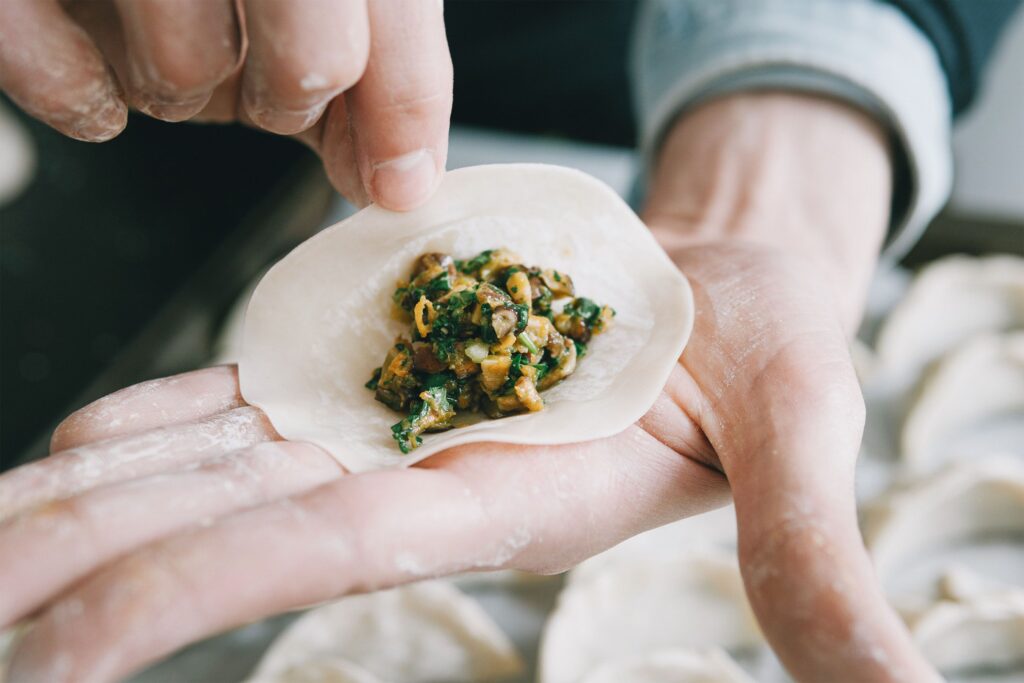People with a nut allergy can be allergic to tree nuts, peanuts, or both. Tree nuts include almonds, pecans, macadamias, cashews, walnuts, pine nuts, chestnuts, and hazelnuts. Despite the word “nut” in their name, peanuts are actually legumes (aka beans) and a member of the pea family. (And although avocado is a fruit, not a nut, people who have a chestnut allergy may have an avocado allergy as well.)
Frequently an allergy to peanuts and an allergy to one or more tree nuts go hand in-hand: According to the American College of Allergy, Asthma and Immunology, between 25 to 40 percent of people who are allergic to peanuts are allergic to at least one tree nut.
Allergic reactions to nuts can have serious side effects and even lead to death. “Peanut allergy occurs when your immune system mistakenly identifies peanut proteins as something harmful,” according to the Mayo Clinic. The allergic reaction from consuming nuts when you have an allergy can range from mild—itchy skin, redness, or stomach upset—to severe— anaphylaxis, a restriction of the airways.
You might be wondering whether coconuts are safe to eat with a nut allergy. Coconuts actually are not nuts; they are fruits and fall under a subcategory of fruits called drupes. Some drupes, including coconuts, can fall under the category of tree nuts. That’s why some people who are allergic to tree nuts are also allergic to coconuts, says Johns Hopkins Medicine.
If you have a tree nut allergy, consult your doctor before eating anything containing coconuts. However, if you are found to not have an allergy to coconuts, you can enjoy coconut milk and coconut cream, which is used in coffee creams and ice creams. Additionally, nutmeg is also not a nut. Nutmeg is a spice and it is safe to eat on a nut-free vegan diet.

What Does a Nut-Free Vegan Eat?
A nut-free vegan diet is similar to a vegan diet, only without nuts or any nut-based foods. On a nut-free vegan diet you can have:
- Vegetables
- Fruits
- Grains, including pasta
- Legumes, such as beans, chickpeas, and lentils
- Seeds, seed-based milks, and seed-based butter like tahini
- Nut-free flours, like coconut flour and cassava flour
- Plant-based milks, including soy milk and pea milk
- Nutritional yeast (Used to make vegan mac & cheese. This one is nut-free.)
- Rice
- Tofu, tempeh, and seitan
On a nut-free vegan diet, you won’t be eating:
- Raw, roasted or cooked nuts
- Nut-based butters, including almond butter and peanut butter
- Candy, ice cream or desserts containing nuts
- Nut-based cheeses, such as those made from cashews, almonds and macadamia nuts
- Cashew cream, cashew yogurt, or cashew cream cheese
- Plant-based milks made from nuts, including almond milk, macadamia milk, or cashew milk
- Flour made from nuts, such as almond flour and almond meal
A lot of plant-based foods use cashews to simulate dairy. But if you’re unable to eat cashews due to a tree nut allergy, that doesn’t mean you have to miss out on the creaminess. Hemp seeds offer a lot of options for nut-free vegans as the basis of dairy alternatives like hemp margarine and hemp milk. Oat milk is another good option.

The Benefits of a Nut-Free Vegan Diet
If you’re considering a nut-free vegan diet, here are some of the advantages you can look forward to:
It’s lower in saturated fat
Eating foods with saturated fats can raise your cholesterol levels, which is associated with an increased risk of heart disease and stroke, according to the American Heart Association. Saturated fats are found in many meats and dairy products, including poultry with skin; beef with fat; pork; lamb; cream; cheese; and butter. When you’re eating a plant-based diet, these foods are off the table.
You can get your ‘good’ fats from seeds
Nuts can be a good source of healthy unsaturated fats—but if you’re on a nut-free vegan diet, they’re out of the picture. Fortunately, seeds, seed-based butters like tahini, and seed-based milks also pack a punch when it comes to healthy unsaturated fats. Pumpkin seeds, sunflower seeds, and other seeds will give you the healthy fats you need while also keeping your cholesterol low.
You can get your protein from legumes
Protein is a crucial component of our nutritional well-being; it is an energy source and it builds muscle and bones. Adult men need 56 grams of protein per day, while adult women need 46 grams per day. Legumes are a good source of protein, and for this reason, many rely on legumes as a source of plant-based protein. One cup of edamame (boiled soybeans) provides 31.3 grams of protein and one cup of boiled lentils provides 18 grams of protein. (Learn everything you need to know about eating legumes and the recipes for cooking the healthiest ones.) If you need more protein sources, check out our list of the best sources of vegan protein.
Legumes, which are part of a nut-free vegan diet, are inexpensive. Legumes, such as lentils and chickpeas, are the least costly way to acquire protein. You can buy many legumes in cans for fairly low prices, but many legumes can also be purchased (usually in dried form) in bulk bins at your supermarket.

The Disadvantages of a Nut-Free Vegan Diet
Here are some of the disadvantages to consider for a nut-free vegan diet:
You will need to get your protein elsewhere
Protein is important to any diet, and eating nuts can help you get enough. Fortunately, you can get enough protein on a nut-free vegan diet. From legumes to spinach to quinoa, there are plenty of nut-free protein sources to explore.
Some plant-based meats contain nuts or pea proteins
Some people who have a peanut allergy also have a pea allergy. (Remember, peanuts are a member of the pea family.) This can be problematic for nut-free vegans seeking to eat plant-based meat, as some contain an ingredient called pea protein isolate. Read labels carefully before consuming plant-based meats.
It isn’t always obvious when food contains peanuts or tree nuts
Having a nut allergy can be a frustrating experience, as many processed foods contain peanuts or tree nuts. These nuts can lend flavor to everything from glazes and sauces to baked goods to candies. As always, read labels carefully to see if peanuts or tree nuts are listed as an ingredient.

How to Start a Nut-Free Vegan Diet
Prior to embarking on a nut-free vegan diet, you should get tested in an allergist’s office for an allergy to peanuts or tree nuts. This may involve a blood test or a skin test, as well as temporarily keeping a food diary. Once you know your specific allergies, you will have a better idea of what foods you can and can’t eat.
If you decide to begin a nut-free vegan diet, speak with a nutritionist first who can help you make sure that you are filling your nutritional needs.
There are a wealth of nut-free recipes online, and fortunately, there are plenty for nut-free vegans, too. Check out this recipe for hearty vegan stew, this recipe for red lentil dhal, and this recipe for chocolate avocado pudding. (However, if you have a chestnut allergy, get tested for an avocado allergy.)
No comments:
Post a Comment